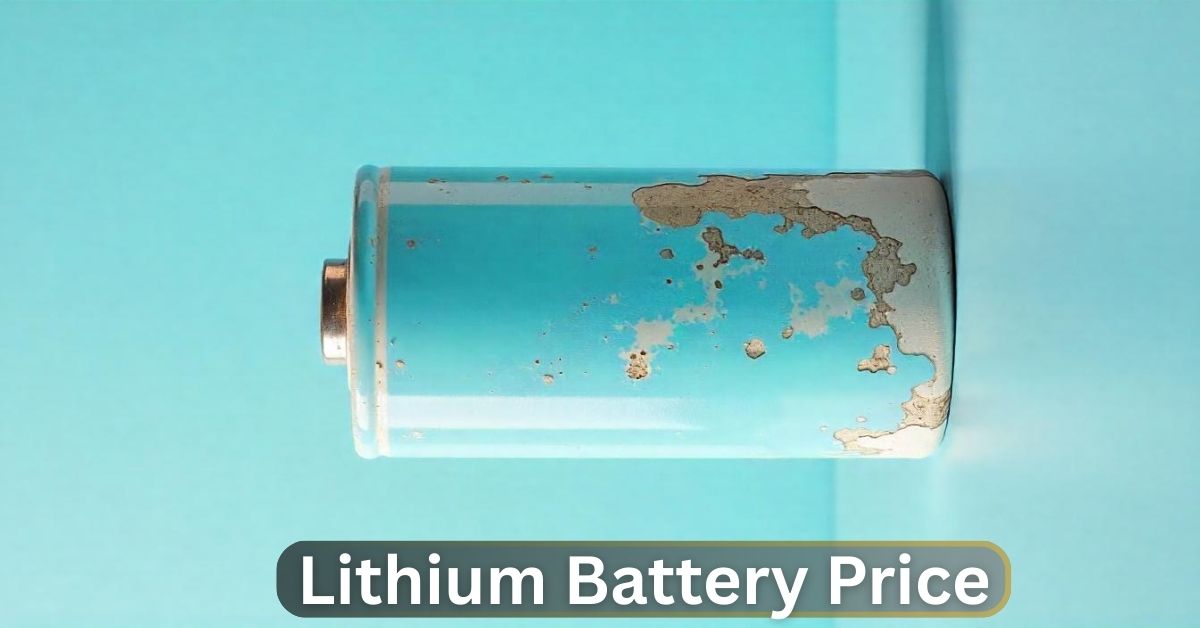In recent years, lithium batteries have become the cornerstone of modern energy storage systems, powering everything from smartphones and electric vehicles (EVs) to renewable energy installations. As demand continues to rise, many consumers, businesses, and tech enthusiasts are paying close attention to one major factor: the price of lithium batteries.
In this article, we’ll explore the current state of lithium battery prices in 2025, what affects them, and what trends to look out for in the future. Whether you’re a buyer, investor, or just curious about the future of energy storage, this guide will give you a clear and updated perspective.
Lithium Battery Prices: A Quick Look
As of early 2025, the price of lithium-ion batteries averages $90 to $130 per kilowatt-hour (kWh), depending on the specific chemistry, format, and supplier. This marks a significant decrease from over $1,100/kWh back in 2010. The consistent price drop over the years has been a key factor in the widespread adoption of electric vehicles and solar energy storage systems.
However, the price trend hasn’t been entirely linear. After hitting a historic low in 2021–2022, lithium battery prices experienced a slight rebound in 2023 due to:
-
Supply chain disruptions
-
Raw material shortages
-
Geopolitical tensions
-
Increased global demand
Now in 2025, prices are stabilizing again, thanks to new lithium mining projects, improved recycling methods, and advancements in battery technology.
What Determines Lithium Battery Prices?
Several factors influence the cost of lithium batteries. Here’s a closer look at the major price drivers:
1. Raw Material Costs
Lithium batteries rely heavily on materials like:
-
Lithium carbonate/lithium hydroxide
-
Cobalt
-
Nickel
-
Graphite
Prices of these raw materials fluctuate based on global supply, mining output, and geopolitical developments. For instance, cobalt and nickel—primarily mined in politically unstable regions—can spike in price due to conflict or regulation.
2. Battery Chemistry
Different lithium battery chemistries come with different price tags. The most common include:
-
Lithium Iron Phosphate (LFP) – Generally cheaper, safer, and widely used in entry-level EVs and grid storage.
-
Nickel Manganese Cobalt (NMC) – Offers higher energy density but is more expensive due to cobalt and nickel.
-
Lithium Titanate (LTO) – Known for fast charging and long lifespan, but significantly more expensive.
In 2025, LFP batteries dominate the low-cost sector, especially in China and Southeast Asia.
3. Production Scale and Location
Battery prices are also affected by where and how they’re made:
-
Gigafactories and large-scale production facilities can significantly reduce cost per unit.
-
Countries like China, South Korea, and the US have become major players in lithium battery manufacturing.
-
Local production benefits from reduced shipping and import costs, especially for bulk purchases.
4. Technological Advancements
New technologies are helping lower the cost of batteries by:
-
Increasing energy density (more power per kg)
-
Reducing the need for expensive materials (like cobalt)
-
Streamlining manufacturing processes
-
Improving battery lifespan and recyclability
Solid-state batteries, though still in developmental stages, promise even greater efficiency and safety, potentially disrupting the pricing model altogether in the coming years.
Regional Variations in Lithium Battery Pricing
Asia
Asia—particularly China—remains the world’s biggest producer and exporter of lithium batteries. Thanks to government subsidies, vertical integration, and local sourcing, prices in China are often 20–30% lower than in North America or Europe.
North America
With growing investment in domestic battery production, prices are becoming more competitive. However, the reliance on imported raw materials still keeps costs slightly higher than Asia.
Europe
Europe is ramping up its gigafactory plans, especially in Germany, Sweden, and the UK. Environmental regulations and high labor costs result in relatively higher battery prices, but consumers benefit from robust warranty and recycling programs.
Lithium Battery Price by Application (2025 Estimates)
| Application | Average Price (USD per kWh) |
|---|---|
| Consumer Electronics | $100–$120 |
| Electric Vehicles (EVs) | $90–$110 |
| Residential Energy Storage | $120–$140 |
| Industrial/Commercial Use | $100–$130 |
These figures are averages and can vary widely based on supplier contracts, order volume, and technology.
Price Forecast: What’s Next?
Experts predict that lithium battery prices may dip below $80/kWh by 2026, driven by:
-
New lithium sources in South America, Australia, and Africa
-
Widespread battery recycling
-
Emerging solid-state technology
-
Better global supply chain management
However, the transition will depend on regulatory frameworks, environmental sustainability, and continued investment in innovation.
FAQ: Lithium Battery Price
Q1: Why are lithium battery prices dropping?
A: The drop is due to economies of scale, better mining and recycling processes, and advances in technology that reduce the need for expensive materials like cobalt.
Q2: Will solid-state batteries be cheaper than lithium-ion?
A: Initially, no. Solid-state batteries are more expensive to produce right now. But within the next decade, they are expected to become cost-competitive.
Q3: Are lithium batteries cheaper in China?
A: Yes. Thanks to large-scale manufacturing, government incentives, and local material sourcing, lithium batteries are generally 20–30% cheaper in China compared to other regions.
Q4: How can I reduce the cost of purchasing lithium batteries?
A: Buy in bulk, opt for LFP chemistry, source directly from manufacturers, or explore refurbished/recycled options from reputable suppliers.
Q5: Are lithium batteries still worth the investment in 2025?
A: Absolutely. They offer long lifespan, high energy density, and are increasingly affordable. With prices declining further, lithium batteries remain one of the best energy storage solutions today.
Conclusion
The price of lithium batteries has evolved dramatically over the last decade, and the trend in 2025 shows promising signs of continued affordability and innovation. Whether you’re investing in electric mobility, renewable energy, or tech development, keeping an eye on lithium battery pricing is more important than ever.
As technology advances and global demand rises, the lithium battery market is poised for further transformation. For consumers and businesses alike, now is a smart time to explore options, compare chemistries, and consider long-term energy needs.
The future is electric—and lithium batteries are powering the way.

